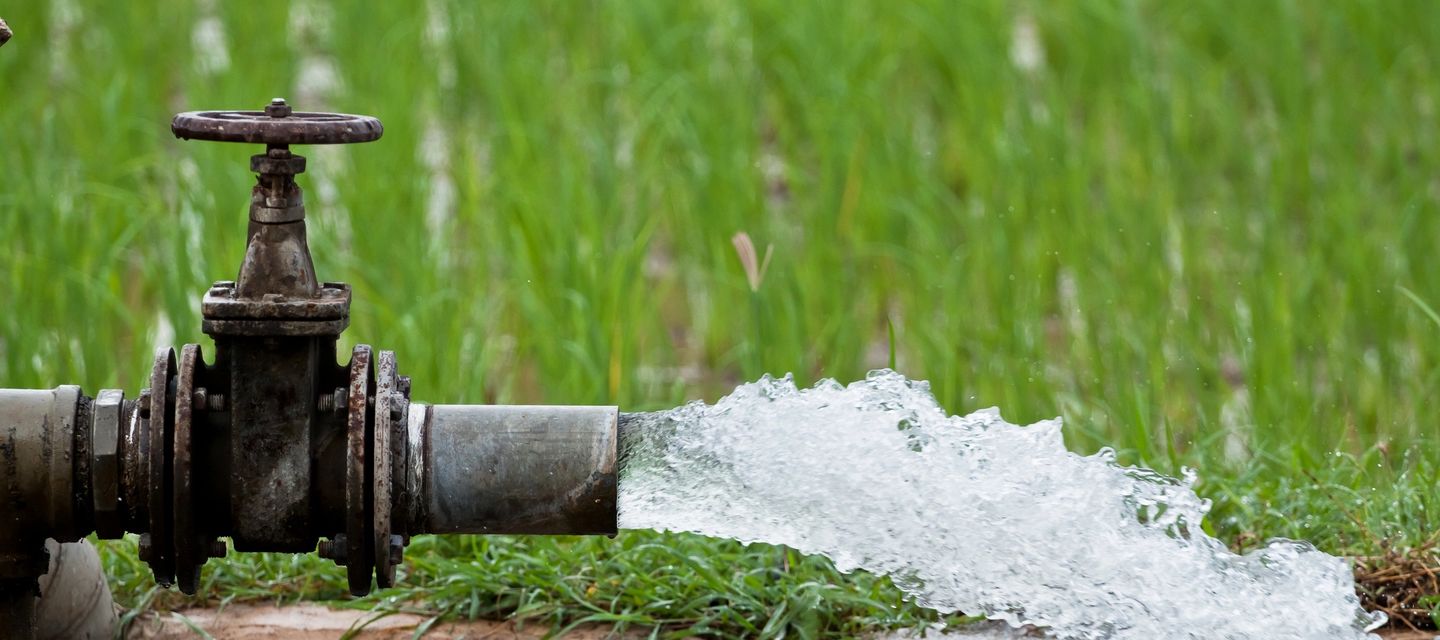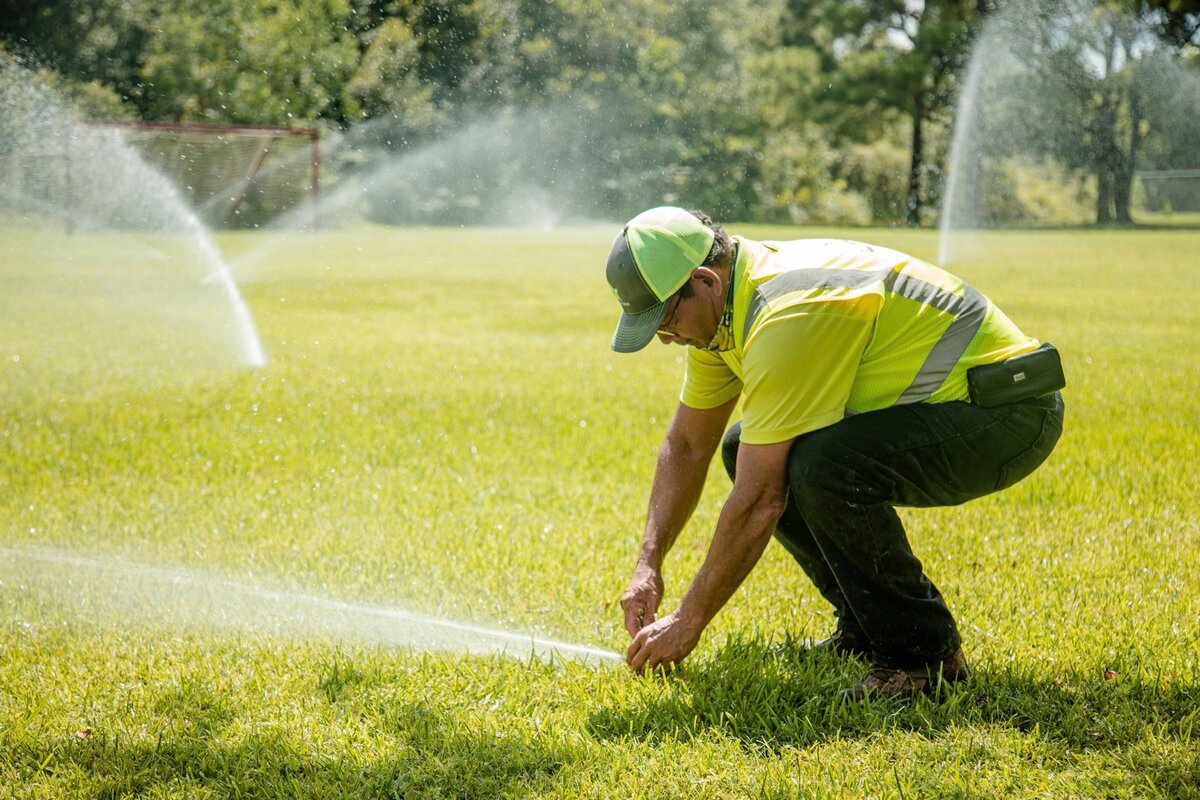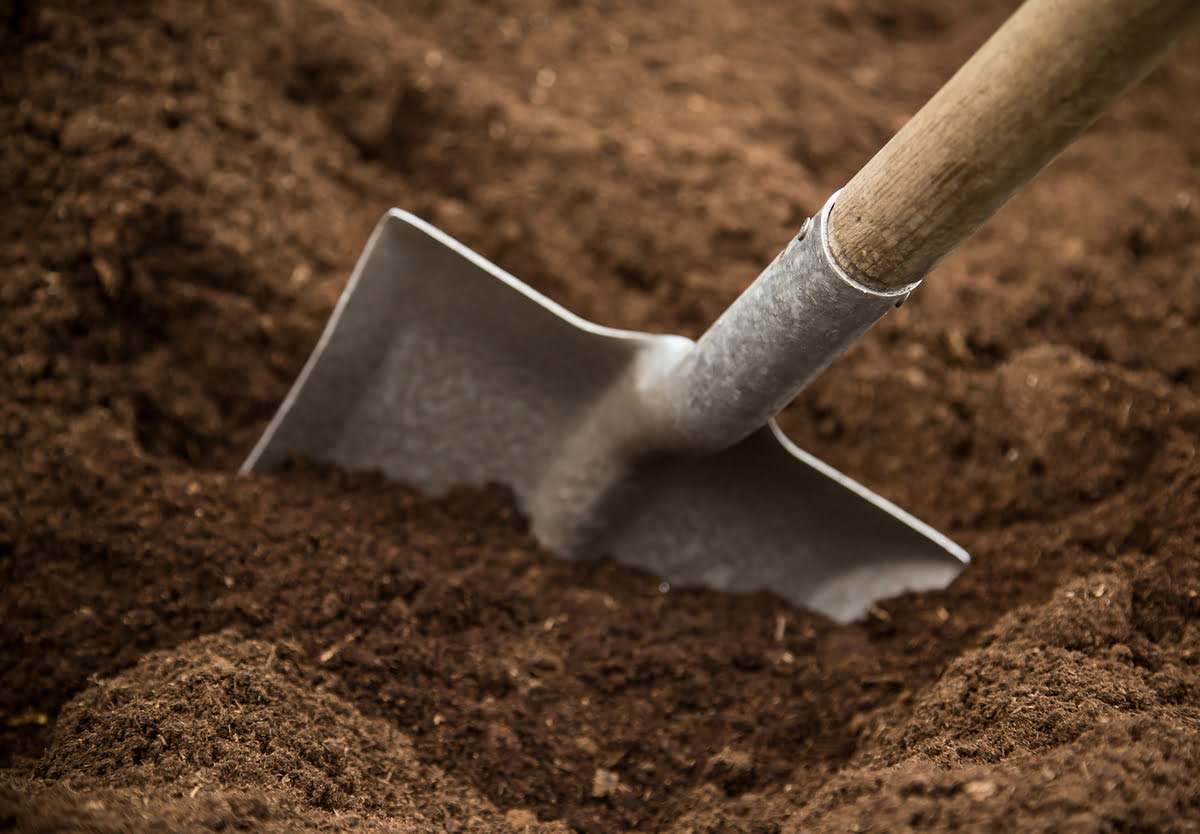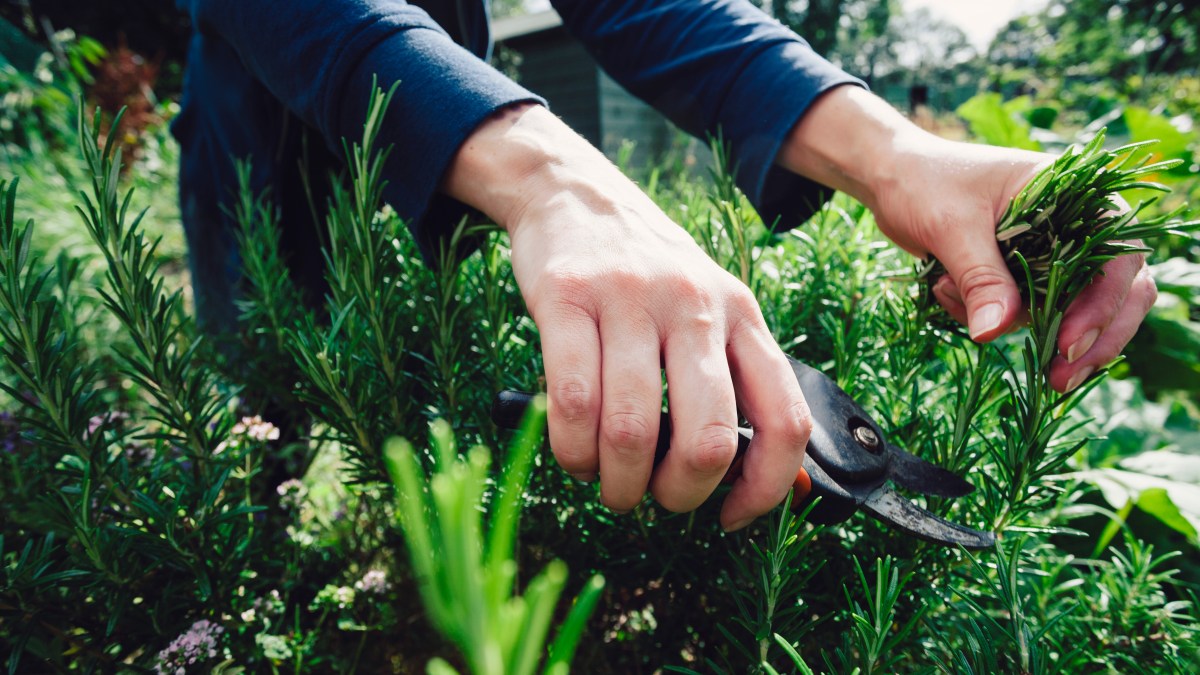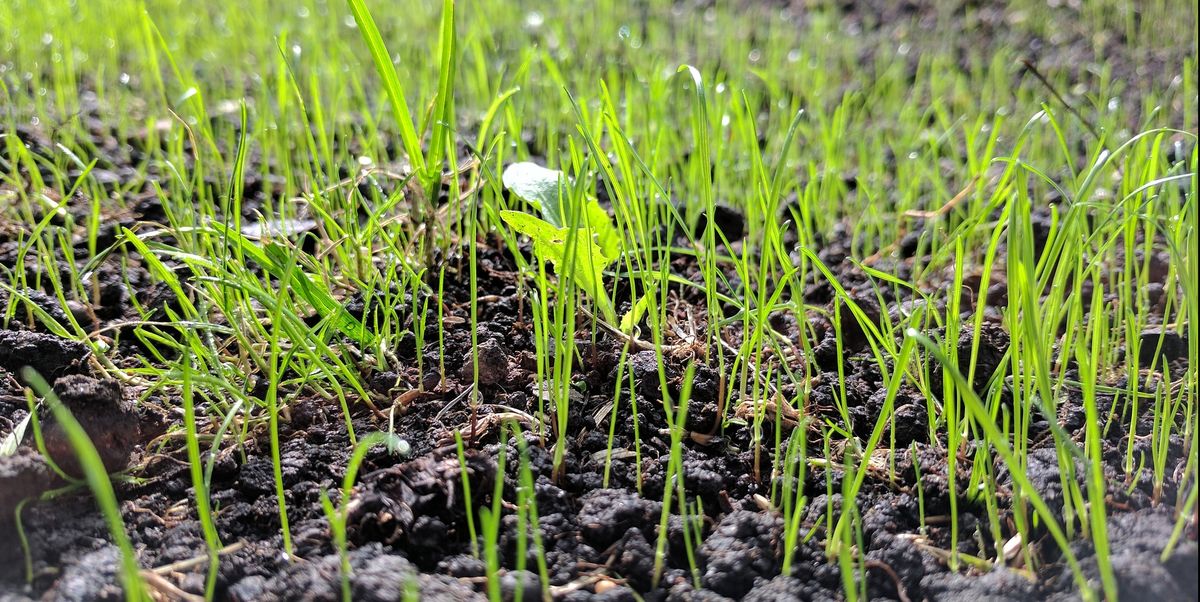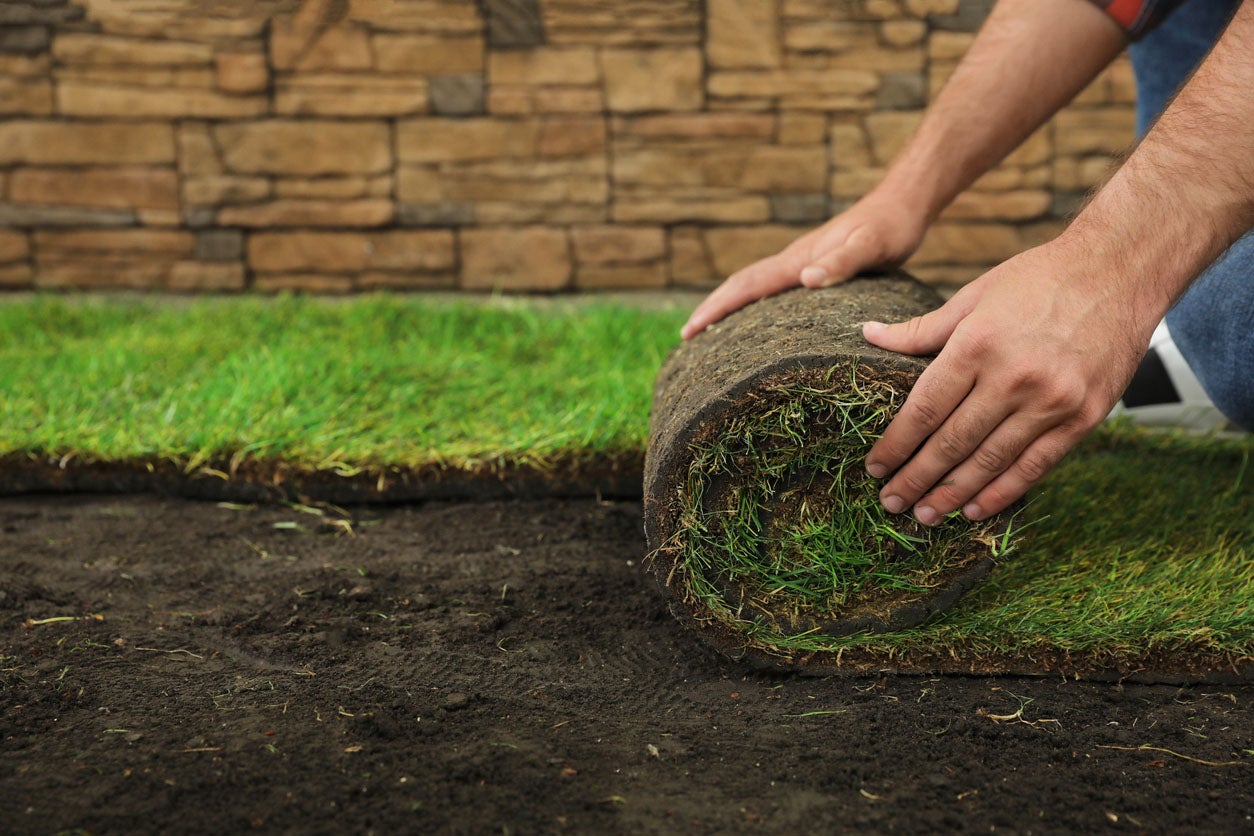Home>Gardening News and Trends>Latest News>What Size Well Pump Do I Need For Irrigation


Latest News
What Size Well Pump Do I Need For Irrigation
Modified: January 22, 2024
Discover the latest news and expert advice on determining the perfect size well pump for your irrigation needs. Find out what factors to consider and make an informed decision today.
(Many of the links in this article redirect to a specific reviewed product. Your purchase of these products through affiliate links helps to generate commission for Chicagolandgardening.com, at no extra cost. Learn more)
Table of Contents
Introduction
When it comes to irrigation, having the right size well pump is essential. Whether you are a farmer looking to water your crops or a homeowner looking to maintain a lush garden, understanding the factors that determine the size of the well pump needed for irrigation is crucial.
There are several key considerations to keep in mind when determining the appropriate size well pump for your irrigation needs. These factors include water requirements, pump capacity, flow rate, head pressure, and total dynamic head (TDH). Each of these factors plays a significant role in selecting the right pump size to ensure efficient and effective irrigation.
Before diving into the technical aspects of selecting a well pump, it’s important to have a clear understanding of your irrigation needs. Consider the size of the area to be irrigated, the types of plants or crops being watered, and any specific requirements for your irrigation system. This information will serve as a foundation for determining the appropriate pump size.
In this article, we will explore the factors that impact well pump sizing for irrigation systems and provide a step-by-step guide to help you select the right pump size for your specific needs. By following these guidelines, you can ensure that your irrigation system operates optimally, conserves water, and promotes healthy plant growth.
Factors to Consider
When determining the size of a well pump for irrigation, several important factors need to be taken into consideration. These factors will ultimately impact the overall efficiency and effectiveness of your irrigation system. Let’s explore each of these factors in more detail:
- Water Requirements: The amount of water needed for your irrigation system is a critical factor in determining the size of the pump. This includes considering the area to be irrigated, the types of plants or crops being watered, and the desired water flow.
- Pump Capacity: The pump’s capacity refers to its ability to deliver water. Understanding the pump’s capacity is essential to ensure it can meet the demands of your irrigation system. It is typically measured in gallons per minute (GPM) or liters per minute (LPM).
- Flow Rate: The flow rate refers to the speed at which water flows through the irrigation system. It is measured in gallons per minute (GPM) or liters per minute (LPM). Determining the desired flow rate will help determine the appropriate pump size.
- Head Pressure: Head pressure is the force that is required to push water through the irrigation system against gravity and friction. It is typically measured in pounds per square inch (PSI) or bar. Understanding the head pressure is crucial to select a pump that can handle the specific pressure requirements.
- Total Dynamic Head (TDH): TDH is the combination of head pressure and friction losses in the irrigation system. It takes into account the height difference between the water source and the highest point of irrigation, as well as the length and diameter of the pipes. Calculating the TDH is essential in determining the pump size.
By carefully considering these factors, you can ensure that the well pump you select for your irrigation system is appropriately sized to meet the water demands and deliver efficient and effective performance. In the following sections, we will dive deeper into each factor and provide guidance on how to calculate the ideal pump size for your irrigation needs.
Water Requirements
The water requirements for your irrigation system are a crucial factor to consider when determining the size of the well pump needed. Understanding the specific needs of your plants or crops and the area to be irrigated is essential in ensuring adequate water supply. Here are a few key considerations:
Area to be Irrigated: Assess the size of the area that needs irrigation. Measure the length and width of the space to determine the total square footage. This will give you an idea of the volume of water needed to adequately cover the area.
Types of Plants/Crops: Different plants and crops have varying water requirements. Some plants may require more frequent watering or higher volumes of water. Research the specific watering needs of the plants or crops you are cultivating to ensure proper irrigation.
Climate and Soil Conditions: The climate and soil conditions in your region can have a significant impact on water requirements. Dry climates or sandy soils may require more frequent watering, while areas with high rainfall or clay soils may require less water. Consider the natural water retention and drainage properties of your soil when determining water requirements.
Irrigation System Efficiency: The efficiency of your irrigation system also plays a role in determining water requirements. Assess the type of irrigation system you are using – whether it’s sprinklers, drip irrigation, or other methods – and consider their water distribution patterns and efficiency. Some systems may require more water to achieve effective coverage, while others are designed to minimize water waste.
By considering these factors, you can estimate the water requirements for your irrigation system. Having a clear understanding of the volume of water needed will guide you in selecting the appropriate well pump capacity and flow rate.
It’s important to note that evaluating water requirements is an ongoing process. Monitor your plant’s moisture levels regularly and adjust your irrigation system accordingly. This will help ensure optimal water usage and prevent over or under-watering, promoting healthy plant growth and conserving water resources.
Pump Capacity
The pump capacity is a vital consideration when determining the size of the well pump needed for irrigation. It refers to the pump’s ability to deliver water and is typically measured in gallons per minute (GPM) or liters per minute (LPM). Here are some key points to consider regarding pump capacity:
Matching Water Demand: The pump capacity should align with the water demand of your irrigation system. It should be able to supply enough water to meet the requirements of the area being irrigated and the specific plants or crops being watered. If the pump capacity is too low, it may not provide sufficient water, leading to inadequate irrigation. On the other hand, if the pump capacity is too high, it can result in excessive water wastage.
Balancing Peak Demand: It’s crucial to consider peak water demand when selecting the pump capacity. Peak demand refers to instances when the water requirement is at its highest, such as during hot summer days or when multiple zones of the irrigation system are operating simultaneously. The well pump should be able to handle these peak demands to ensure consistent water supply and avoid strain on the system.
System Design: The design of your irrigation system can impact the pump capacity needed. Factors such as pipe diameter, length, and friction losses should be taken into account. These elements can affect the overall flow rate of the system and subsequently influence the required pump capacity.
Pump Efficiency: Consider the efficiency of the pump when evaluating its capacity. Some pumps may require higher horsepower to achieve the desired flow rate, while others may operate more efficiently at lower horsepower. Opting for a pump with high efficiency can help reduce energy consumption and operating costs.
Future Expansion: It’s wise to anticipate future expansion or changes in your irrigation system when determining pump capacity. If there are plans to expand the irrigated area or add more zones to the system, selecting a pump with a larger capacity can ensure it can accommodate the future growth without the need for an upgrade.
By carefully evaluating the water demand, peak demand, system design, pump efficiency, and future expansion, you can determine the appropriate pump capacity for your irrigation system. Consider consulting with a professional or pump specialist to ensure the right pump capacity is selected, optimizing the performance and longevity of your irrigation system.
Flow Rate
The flow rate is a critical factor to consider when determining the size of a well pump for irrigation. It refers to the speed at which water flows through the irrigation system and is typically measured in gallons per minute (GPM) or liters per minute (LPM). Here are some key points to understand about flow rate:
Determining Water Needs: Assess the water needs of your irrigation system, taking into account the area to be irrigated, the types of plants or crops, and the desired watering frequency. By understanding the amount of water required, you can estimate the flow rate needed to meet those demands.
Matching Pump Capacity: The flow rate specified for your irrigation system should align with the pump’s capacity. If the flow rate is too high for the pump, it can strain the motor and potentially lead to premature wear and tear. Conversely, if the flow rate is too low, it may not provide sufficient water to meet the irrigation requirements.
Consider Pipe Diameter: The diameter of the pipes used in your irrigation system affects the flow rate. Larger diameter pipes can handle greater flow rates with less resistance, while smaller diameter pipes can cause a decrease in flow rate due to higher friction losses. Calculate the flow rate based on the pipe diameter to ensure adequate water delivery.
Irrigation System Design: The design of the irrigation system, including the layout of pipes, valves, and sprinklers or emitters, can impact the flow rate. Factors such as the number and type of irrigation zones, the distance between them, and the flow restrictors, if any, should be taken into consideration to estimate the appropriate flow rate.
Water Conservation: While it’s essential to ensure adequate flow for irrigation, it’s also important to consider water conservation. Optimize the flow rate to deliver enough water for plant needs without excessive waste. Using efficient irrigation methods like drip irrigation or adjusting sprinkler heads can help minimize water usage and improve overall system efficiency.
By understanding the water needs of your irrigation system, matching the flow rate with the pump capacity, considering pipe diameter, system design, and promoting water conservation, you can determine the appropriate flow rate for your well pump. This ensures optimal water delivery and efficient irrigation for the growth and health of your plants or crops.
Head Pressure
Head pressure is a crucial factor to consider when determining the size of a well pump for irrigation. It refers to the amount of pressure required to push water through the irrigation system against gravity and friction. Understanding head pressure is essential to ensure that the pump can deliver water effectively. Here are a few key points to know about head pressure:
Influence of Elevation: The elevation difference between the water source and the highest point of irrigation affects the head pressure. The higher the elevation, the greater the head pressure required to pump water uphill. It’s important to consider this factor when selecting a well pump. A pump with adequate head pressure capabilities ensures that water reaches all areas of your irrigation system.
Friction Losses: Friction losses occur when water flows through pipes, valves, and fittings. These losses depend on the length, diameter, and material of the pipes used in the irrigation system. Friction losses can reduce the effective head pressure and impact water delivery. By calculating the anticipated friction losses, you can determine the necessary head pressure to overcome these losses and ensure adequate water flow.
Sprinkler Selection: Different types of sprinklers or emitters have different pressure requirements. Some sprinklers may require higher head pressures to achieve proper distribution, while others may operate more efficiently at lower pressures. Consider the specific sprinklers you are using and their pressure specifications when determining the head pressure needed for your well pump.
Pump Performance Curve: The performance curve of the pump provides valuable information about its capabilities at different head pressures. The curve typically displays the relationship between flow rate and head pressure. By referring to the pump’s performance curve, you can evaluate its suitability for your specific irrigation system requirements.
Pressure Loss Calculation: To determine the head pressure needed, it’s important to calculate the pressure losses throughout the irrigation system. Add up the friction losses in the pipes, fittings, and valves, and combine them with the desired elevation change. This total pressure loss will help you select a well pump with the appropriate head pressure capacity.
By considering the elevation difference, friction losses, sprinkler selection, pump performance curve, and pressure loss calculation, you can determine the head pressure requirements for your well pump. This ensures that water is effectively distributed throughout your irrigation system, promoting healthy plant growth and efficient water usage.
Total Dynamic Head (TDH)
The Total Dynamic Head (TDH) is a crucial factor to consider when determining the size of a well pump for irrigation. TDH refers to the combination of head pressure and friction losses in the irrigation system. It takes into account the height difference between the water source and the highest point of irrigation, as well as the length and diameter of the pipes. Understanding TDH is essential in selecting the right pump size. Here are some important points about TDH:
Elevation Change: The elevation change refers to the height difference between the water source (such as a well or reservoir) and the highest point that needs irrigation. This vertical distance impacts the head pressure required to move water uphill. Consider the elevation change when calculating TDH to ensure that the pump can handle the necessary pressure.
Friction Losses: Friction losses occur as water flows through pipes, fittings, and valves. These losses are influenced by factors such as the length, diameter, and material of the pipes used in the irrigation system. Friction losses reduce the effective head pressure and can impact water delivery. Including the anticipated friction losses in your TDH calculation ensures that the pump is adequately sized to overcome these losses.
Pipe Length and Diameter: The length and diameter of the pipes in your irrigation system impact TDH. Longer pipes and smaller diameters contribute to increased friction losses, requiring a higher head pressure from the pump. Understanding the pipe specifications and their impact on TDH allows for accurate pump sizing.
Valve and Fitting Losses: Valves and fittings in the irrigation system can cause pressure losses. Consider the number and types of valves and fittings used and their associated pressure losses. Taking these losses into account in the TDH calculation ensures that the pump can provide the necessary pressure to overcome them and maintain efficient water flow.
System Design: The overall design of the irrigation system, including the layout of pipes, valves, and sprinklers, affects TDH. The number of zones, their placement, and the specific components used all impact friction losses and head pressure requirements. Evaluating the system design allows for an accurate TDH calculation and selection of the right pump size.
By considering the elevation change, friction losses, pipe length and diameter, valve and fitting losses, and system design, you can accurately calculate the Total Dynamic Head (TDH) for your well pump. This ensures that the pump is properly sized to provide the necessary pressure and overcome any hindrances in the irrigation system, resulting in efficient water distribution for optimal plant growth.
Types of Irrigation Systems
There are various types of irrigation systems available, each with its own benefits and considerations. Understanding the different types of systems can help you determine the appropriate well pump size for your specific irrigation needs. Here are some common types of irrigation systems:
- Sprinkler Irrigation: Sprinkler irrigation involves the use of sprinkler heads that distribute water over the desired area. This method is versatile and suitable for both small and large-scale irrigation. Sprinkler systems can be fixed or portable and are popular for lawns, gardens, and agricultural applications.
- Drip Irrigation: Drip irrigation, also known as micro-irrigation, delivers water directly to the plant roots through emitters or drip tubing. This highly efficient system minimizes water waste and can be suitable for individual plants, rows of crops, or large-scale agricultural operations. Drip irrigation requires lower flow rates compared to sprinkler systems.
- Surface Irrigation: Surface irrigation involves the flooding or furrowing of fields to distribute water. It is commonly used in agricultural settings. This system relies on gravity for water movement, and the pump size considerations are related to water supply rather than pressure requirements.
- Subsurface Irrigation: Subsurface irrigation involves placing underground pipes or tubes to deliver water directly to the root zone of plants. This method reduces water loss due to evaporation and is commonly used for large agricultural or landscape applications.
- Center Pivot Irrigation: Center pivot irrigation systems consist of sprinkler heads mounted on long, rotating arms that pivot around a central point. This system is often used in large agricultural fields and requires sufficient pump capacity and flow rate to cover the entire area while maintaining adequate water pressure.
- Hand Watering: Although not a system per se, hand watering involves manually watering plants with a hose or watering can. This method is suitable for smaller gardens or potted plants and does not require a well pump for operation.
The type of irrigation system you choose will determine the specific pump capacity, flow rate, and pressure requirements. Each system has different water distribution patterns and efficiency levels. Consider the size of the area to be irrigated, the types of plants or crops, as well as water conservation goals when selecting the appropriate irrigation system for your needs.
By understanding the different types of irrigation systems and their specific requirements, you can make an informed decision about the well pump size that will best accommodate your chosen system. This ensures efficient water distribution and optimal irrigation performance.
Calculating Pump Size
Calculating the appropriate pump size for your irrigation system involves several steps. By following these steps, you can ensure that the pump you select meets the water demand and provides efficient and effective irrigation. Here is a step-by-step guide to calculating the pump size:
Step 1: Determine Water Demand
Begin by assessing the water demand of your irrigation system. Consider the area to be irrigated, the types of plants or crops, and the desired watering frequency. Calculate the total water demand, usually measured in gallons per minute (GPM) or liters per minute (LPM).
Step 2: Determine Total Dynamic Head (TDH)
Next, calculate the Total Dynamic Head (TDH) for your system. This involves considering the elevation change between the water source and the highest point of irrigation, as well as the friction losses in the system. Take into account the pipe length, diameter, and other components that contribute to pressure losses. Sum these values to determine the TDH required for your well pump.
Step 3: Select the Right Pump Size
Based on the water demand and TDH calculated, consult the pump manufacturer’s performance curve chart to determine the appropriate pump size. Cross-reference the desired flow rate (water demand) with the required head pressure (TDH) to identify the pump size that meets these criteria. Consider factors such as pump capacity, horsepower, and efficiency to make an informed decision.
It’s important to note that pump sizing can vary based on the type of irrigation system being used. Different systems have different flow rate and head pressure requirements. For sprinkler irrigation, a pump that can provide sufficient pressure and flow rate is essential. Drip irrigation systems, on the other hand, require lower flow rates but longer operating times.
Consulting with a professional or pump specialist can be beneficial in the process of calculating the pump size. They can assist in understanding the specific requirements of your irrigation system and ensure that the selected well pump is properly sized to meet those needs.
By considering the water demand, calculating the TDH, and selecting the right pump size, you can ensure that your well pump is appropriately sized for your irrigation system. This ensures efficient water delivery, promotes optimal plant growth, and maximizes the effectiveness of your irrigation efforts.
Step 1: Determine Water Demand
The first step in calculating the pump size for your irrigation system is to determine the water demand. This step involves assessing the amount of water needed to adequately irrigate your specific area, plants, or crops. Consider the following factors when determining the water demand:
Area to be Irrigated: Measure the length and width of the area to be irrigated to calculate the total square footage. This will give you an idea of the coverage area that needs water.
Types of Plants/Crops: Different plants and crops have varying water requirements. Some plants may require more frequent watering or higher volumes of water. Research the specific watering needs of the plants or crops you are cultivating to determine the appropriate water demand.
Climate and Seasonal Variations: Climate plays a significant role in water demand. Consider the average temperature, humidity, and rainfall patterns in your area. Dry and hot climates typically require more watering, while cooler or rainy seasons may require less water. Adjust the water demand accordingly based on the specific climate conditions.
Soil Type and Drainage: Soil types vary in their water-holding capacity and drainage properties. Sandy soils drain quickly and may require more frequent watering, while clay soils retain moisture longer. Assess the soil type in your irrigation area to determine the appropriate water demand.
Irrigation System Efficiency: The efficiency of your irrigation system also affects water demand. Consider the type of system you have, such as sprinklers, drip irrigation, or others, and evaluate their water distribution patterns and efficiency. Some systems may require more water due to higher evaporation rates or inefficiencies, while others are designed to minimize water waste.
By assessing the area to be irrigated, the types of plants or crops, the climate and seasonal variations, the soil type and drainage, and the efficiency of your irrigation system, you can determine an estimate of the water demand. This will serve as a foundation for selecting the appropriate pump size.
Keep in mind that it’s important to regularly monitor the moisture levels of your plants or crops and adjust your irrigation system accordingly. This will optimize water usage and prevent over or under-watering, resulting in healthier plants and more efficient water management.
Step 2: Determine Total Dynamic Head
In the process of calculating the pump size for your irrigation system, the next step is to determine the Total Dynamic Head (TDH). TDH refers to the combination of head pressure and friction losses in the irrigation system. This step involves considering the elevation change and the friction losses throughout the system. Here’s how to determine the TDH:
Elevation Change: Evaluate the elevation difference between the water source and the highest point of irrigation. Measure the vertical distance in feet or meters. This elevation change affects the head pressure required to move water uphill. The greater the elevation change, the higher the head pressure needed.
Friction Losses: Friction losses occur as water flows through pipes, fittings, valves, and other components in the irrigation system. These losses are influenced by factors such as the length, diameter, and material of the pipes. Calculate the friction losses by considering the specific components and their associated friction loss values.
Pipe Diameter and Length: Take into account the diameter and length of the pipes used in your irrigation system. Larger diameter pipes can handle greater flow rates with less resistance, resulting in lower friction losses. Longer pipes contribute to increased friction losses, requiring higher head pressure. Consider the specifications of your pipes when calculating friction losses.
Other Components: Valves, fittings, and other components in the irrigation system also contribute to friction losses. Take into consideration the number and type of these components and their associated friction loss values. These losses can impact the overall head pressure required.
Calculate the TDH: Combine the elevation change and the friction losses to calculate the TDH. Add the elevation change to the total friction losses to get the total head pressure required. This value represents the Total Dynamic Head for your irrigation system.
Accurate determination of the TDH is important as it helps in selecting a well pump that can provide the necessary head pressure to overcome the elevation change and friction losses. Understanding the TDH ensures that the pump can deliver water effectively and efficiently throughout the irrigation system.
Keep in mind that consulting with a professional or pump specialist can be helpful in determining the friction losses and accurately calculating the TDH for your specific irrigation system. Their expertise will ensure that the pump is properly sized to meet the specific requirements of your irrigation setup.
Step 3: Select the Right Pump Size
After determining the water demand and Total Dynamic Head (TDH) for your irrigation system, the next step is to select the appropriate pump size. This step involves referring to the pump manufacturer’s performance curve and considering various factors to ensure that the chosen pump meets the specific requirements of your irrigation system. Here is how to select the right pump size:
Pump Capacity: Refer to the pump manufacturer’s performance curve, which typically shows the relationship between flow rate and head pressure. Cross-reference the desired flow rate (water demand) with the required head pressure (TDH) to identify the pump capacity that meets these criteria. Ensure that the pump’s capacity is sufficient to meet the water demand of your irrigation system.
Horsepower: Consider the horsepower (HP) rating of the pump. This indicates the power output of the pump motor. Select a pump with adequate horsepower to handle the calculated TDH and flow rate. A higher TDH or flow rate may require a pump with a higher horsepower rating to ensure efficient and reliable operation.
Pump Efficiency: Assess the efficiency rating of the pump. A more efficient pump can deliver the desired flow rate and head pressure with less energy consumption. Look for pumps with higher efficiency ratings to minimize energy costs and reduce environmental impact.
Consider Future Expansion: Anticipate any future expansion or changes in your irrigation system. If there are plans to expand the irrigated area or add more zones to the system, consider selecting a pump with a larger capacity or horsepower to accommodate the future growth without the need for an upgrade.
Consulting with a Professional: It is highly recommended to consult with a professional or pump specialist to ensure that the selected pump size aligns with the specific requirements of your irrigation system. They can provide valuable insights and expertise in selecting the right pump size, taking into account factors such as pipe size, system design, and available power supply.
By considering the pump capacity, horsepower, pump efficiency, and potential future expansion, you can make an informed decision when selecting the right pump size. Ensuring that the pump meets the flow rate and head pressure requirements of your irrigation system will maximize its efficiency, promote proper water distribution, and contribute to the overall success of your irrigation efforts.
Conclusion
Choosing the right size well pump for your irrigation system is essential for optimal water delivery, efficient operation, and successful plant growth. By carefully considering factors such as water demand, pump capacity, flow rate, head pressure, and Total Dynamic Head (TDH), you can determine the appropriate pump size to meet the specific requirements of your irrigation system.
Understanding your water needs, including the area to be irrigated, the types of plants or crops, and the desired watering frequency, allows you to estimate the water demand. Calculating the TDH, which comprises elevation change and friction losses, ensures that the pump can deliver water effectively throughout the system.
Once the water demand and TDH are determined, selecting the right pump size involves considering factors such as pump capacity, horsepower, and efficiency. Referring to the pump manufacturer’s performance curve and consulting with professionals or pump specialists can aid in making an informed decision that aligns with your irrigation system requirements.
Regular monitoring of your plants’ moisture levels and periodic adjustments to your irrigation system will help optimize water usage, prevent over or under-watering, and promote healthy plant growth. Additionally, considering potential future expansion within your irrigation system when selecting the pump size can help avoid the need for costly upgrades down the line.
Ultimately, selecting the correct pump size for your irrigation system will ensure efficient water delivery, conserve water resources, and promote the health and vitality of your plants or crops. By following the step-by-step process outlined in this article and considering the unique characteristics of your irrigation system, you can make an informed decision that will optimize your irrigation efforts and yield successful results.
